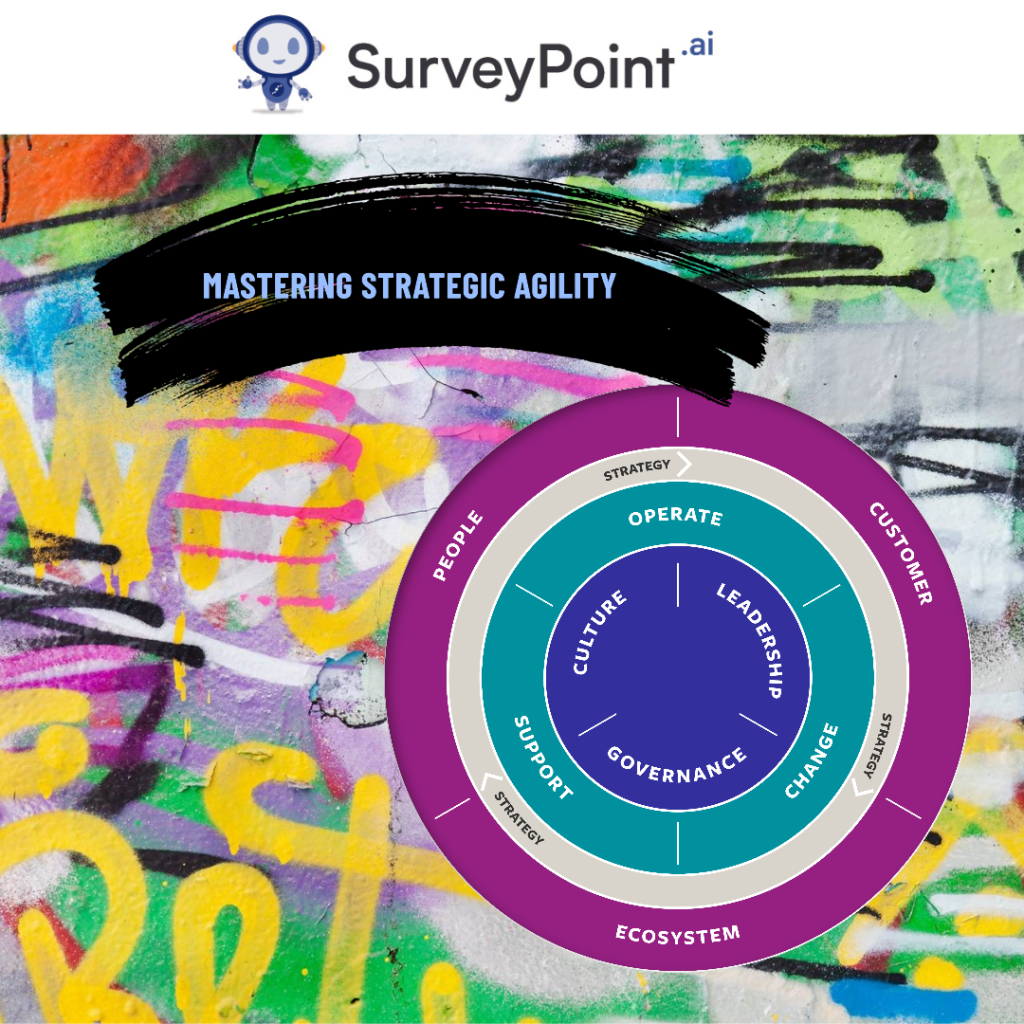Markets are constantly evolving due to new technologies, economic conditions, and buyer preferences. Businesses that quickly adjust their tactics can capitalize on fresh opportunities while reducing risks.
Strategic agility gives firms a competitive advantage by quickly generating new ideas and adapting their products, services, and business models. Organizations can keep one step ahead of rivals with the help of strategic agility.

What is Strategic Agility ?
Strategic agility is an organization’s ability to respond quickly to changing situations and market conditions while staying true to its long-term strategic goals.
Need for Strategic Agility
- Risk management: Responding rapidly to unanticipated events, such as supply chain breakdowns or economic downturns, can help organizations mitigate negative consequences and get back on their feet faster.
- Customer-centeredness: Customers’ requirements and preferences might shift swiftly. Businesses that can adapt their products and services in response to customer feedback and changing demand are more likely to retain and attract customers.
- Innovation: Strategic agility fosters a culture of experimentation and the generation of new ideas. It encourages employees to develop and test new ideas, which can lead to game-changing inventions.
- Globalization: In today’s interconnected globe, firms frequently need to expand in other countries. Organizations can better respond to changing markets, norms, and cultural peculiarities with the support of strategic agility.
- Technical Advancement: Technology is improving, and changes are occurring at a faster rate. Businesses that swiftly adapt to new technology or exploit it to their advantage are more likely to succeed.
How to Plan an Agile Business Strategy ?
Planning an agile business strategy means taking a flexible and adaptable approach to strategic planning that lets your company respond quickly to changes in the business environment. Here’s a step-by-step guide to planning a flexible business strategy:
- Reach clear goals and objectives:
- Spell out your strategy’s goals and aims clearly and precisely. These should fit with what your company wants to do and where it wants to go.
- Ensure your goals are clear, measurable, realistic, and time-bound.
2. Collecting information about the market
- Keep up with changes in the market, the industry, and the competitive situation.
- Gather information and feedback from stakeholders, customers, and staff to better understand changing needs and tastes.
3. Make several different strategies
- Instead of relying on a single, fixed plan, make several different strategy options. Because of this, you can quickly adjust to changing circumstances.
- Think about the different situations and problems that could happen in your business.
4. Make intradepartmental teams
- Make teams that include people from different business units or areas. People with diverse backgrounds and points of view should be on these teams.
- Let these groups work together and decide quickly on what to do.
5. Implement Agile Frameworks
- You could use agile models like Scrum or Kanban to plan your strategy. These methods can be used in many business situations, not just software creation.
- Agile systems put a lot of weight on adaptability, getting feedback quickly, and developing in small steps.
6.Invest in money on technology and data analytics:
- Use business intelligence, data analytics, and technology to quickly monitor market trends and learn important information.
- You can change your tactics if you make choices based on facts.
7. Adapt changes :
- You may need to change your organization’s culture, structure, and routines to use agile strategies. Be ready to handle these changes in the right way.
- Share the changes in strategy with the staff, partners, and clients in an open way
8. Customer Centric :
- Keep the customer at the center of your plan. Get feedback often so you can change your method to meet the changing needs of your customers.
Conclusion
Remember that using an agile business strategy is not a one-time event but a process that goes on over time. It requires being flexible, working as a team, and wanting to grow and learn. By creating an agile mindset, these methods will help your business deal with uncertainty and be successful in the long run.

